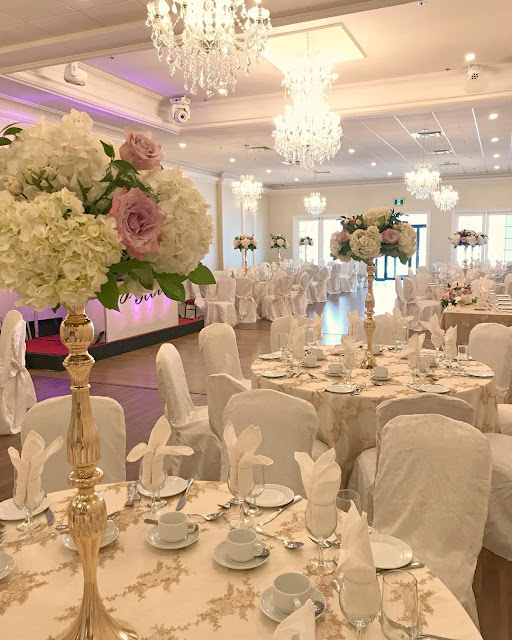How to Choose the Right Banquet Hall Layout for Your Event in Toronto
Choosing the right banquet hall layout for your event in Toronto is a crucial decision that can significantly impact the overall experience of your guests. Here's a guide to help you navigate through the process and make an informed decision:
Before diving into the intricacies of banquet hall layouts, it's essential to clearly define the goals of your event. Whether you're organizing a wedding reception, corporate conference, or a social celebration, understanding the purpose will guide your decisions. For example, a wedding reception might call for a layout that encourages social interaction and intimacy, such as round tables, while a corporate conference might lean towards a theater-style setup for presentations. By establishing your event goals upfront, you lay the foundation for choosing a layout that aligns with the overall atmosphere you want to create.
Accurately estimating the number of attendees is a pivotal step in selecting the right banquet hall layout. The size of your guest list directly influences the available layout options. A crowded space can lead to discomfort and hinder movement, impacting the overall experience. Conversely, a layout designed for too few guests may create a sense of emptiness. Carefully consider the anticipated number of attendees to ensure the banquet hall can comfortably accommodate everyone, providing ample space for movement and activities. This step is fundamental to creating an environment that feels inviting and well-suited to the scale of your event.
Once you've outlined your event goals and estimated the guest count, the next step is to decide on the type of seating arrangement that best suits your needs. Banquet or round tables are often ideal for social events, fostering conversation and intimacy. On the other hand, theater-style seating is suitable for presentations and lectures, providing a clear line of sight to a stage or focal point. If your event involves workshops or training sessions, a classroom-style arrangement with tables and chairs in rows might be more appropriate. Each seating option creates a distinct atmosphere, so carefully consider the nature of your event to choose the layout that complements its purpose.
As you explore banquet hall layouts, pay close attention to the unique features of the venue itself. Consider the architectural elements, lighting, and available amenities. Choose a layout that not only accommodates your event's requirements but also enhances the overall ambiance of the space. For instance, if the venue boasts grand windows with natural light, consider how different layouts can showcase or complement this feature. By aligning your chosen layout with the venue's characteristics, you ensure a harmonious and visually appealing setting for your event.
Accessibility is a critical aspect of any successful event layout. Ensure that your chosen arrangement provides easy access for all attendees, including those with mobility challenges. Consider factors such as wheelchair accessibility, proximity to restrooms, and the overall flow of foot traffic. A well-thought-out layout not only enhances the experience for all participants but also demonstrates a commitment to inclusivity and guest comfort.
Opting for a banquet hall that offers flexible layout configurations provides versatility for different stages of your event. This adaptability is particularly valuable for multi-day conferences or events with diverse activities. A space that can be easily reconfigured allows you to customize the layout based on evolving needs, ensuring that the venue remains functional and engaging throughout the entirety of your event.
Consider any entertainment, presentations, or specific activities planned for your event and integrate them into your layout decision. The arrangement should support the visibility and engagement of attendees with these focal points. For example, if there's a stage for performances or presentations, ensure that the chosen layout allows for unobstructed views from all angles. By strategically planning the layout around your event's activities, you enhance the overall experience and create a seamless flow for participants.
Collaboration with the venue's event staff is a valuable step in the layout selection process. They possess insights and experience in optimizing layouts for various events within their space. Engage in open communication, discuss your event requirements, and seek their advice on the most suitable arrangements based on the hall's capabilities. Venue staff can provide valuable input on logistics, space utilization, and potential challenges, helping you make informed decisions that contribute to the overall success of your event.
While envisioning the ideal layout for your event, it's crucial to remain mindful of budget constraints. Some layouts may require additional resources, such as extra furniture or equipment, which can impact overall costs. Striking a balance between your vision and practical considerations ensures that your chosen layout aligns with your financial plan. Discuss potential costs with the venue and catering team, factor in any additional expenses associated with your preferred layout, and make informed decisions that align with both your vision and budget.
By carefully considering these steps, you'll be well-equipped to choose the right banquet hall layout for your event in Toronto, creating an environment that enhances the overall experience for both you and your guests.



Comments
Post a Comment